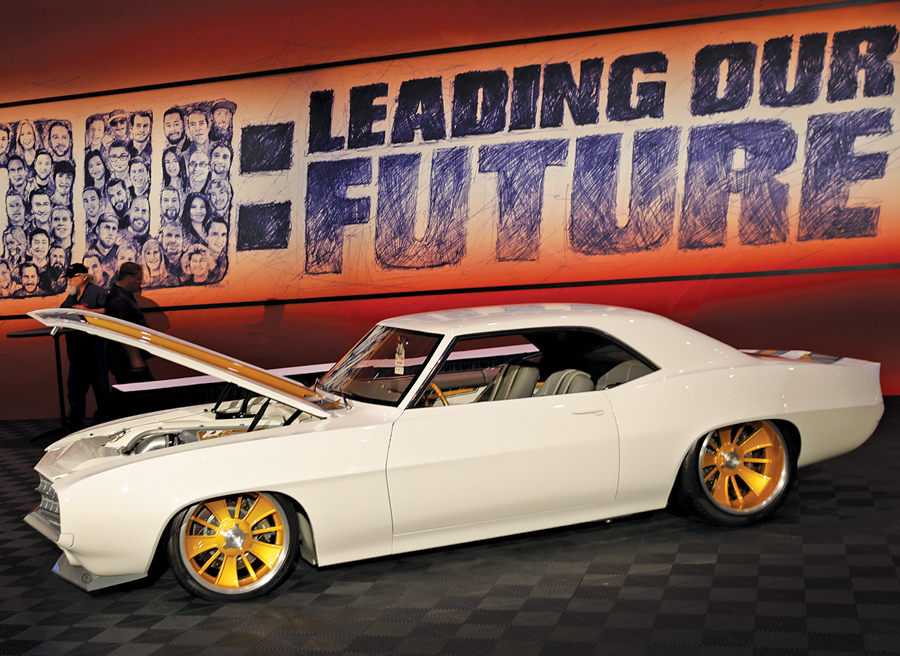
Ispent some quality wheel time in ACC’s ’66 Mustang this month, and it’s a great driver — there’s something special about a car that’s never been blown apart from new. Cars like this just feel more complete.
That X-factor is something that’s hard to describe, but if you’ve ever restored a car and found that your shiny, perfect classic isn’t really a car anymore when it’s done, but rather is a collection of parts that fit together into the shape of a car, you know what I’m talking about. That last bit of a restoration can be the hardest part of the process. Making a car seem whole again — and function like it did when it was actually new — is an art unto itself, and it’s getting harder to find people who really know how an original is supposed to feel.
That’s why cars like our Mustang are special, and it’s why they should remain as stock as we can keep them. Once they’re apart, cleaned up, and back together again, chances are they won’t feel the same out on the road. Not necessarily bad, just different.
So, along those lines, “stock or bust” is a good goal for those of us with mostly original drivers in the garage. Factory-spec ’66 Mustangs, ’56 Nomads, ’12 Model Ts and ’69 C-10s — all of which you can read about in this issue — are vital for the future of the car hobby. But just as important — if not more important right now — are the cars that have been modified.
Aftermarket party
As I write this and finish up the edits for this issue of ACC, I’m also planning my trip to this year’s SEMA show in Las Vegas. That show takes up the entire Las Vegas Convention Center, filling it with anything and everything available in the automotive aftermarket. It’s massive, which is a great sign of the health of the car hobby in an overall sense.
This is where we go to see new emerging trends, as well as new products that can be applied to our old cars. From polishes to modern wiring to brake conversions or fuel-injection kits, SEMA is always a learning experience.
You might also note that SEMA is full of young faces — particularly outside the halls, as it takes special credentials to get inside the building. The outside is an open car show, complete with drifting on a closed-off course and hundreds of modified classics, imports, trucks and more, all serving as camera-phone fodder and Instagram material. It seems like SEMA has everything. But the things you’ll find missing here, at least in any measurable amount, are bone-stock classics.
Trends and time
ACC Auction Editor Chad Tyson says that people will always gravitate toward the music they listened to when they came of age, which he says is the reason classic rock is still viable radio content. I think the same thing is true for cars, and car trends, as well.
That’s why muscle cars shot up in value in the 1980s, as their nostalgic owners matured and started making money. It’s also partially why classic trucks are following suit — these were a go-to in the 1990s for young car people who didn’t have the cash in hand to buy the hot, traditional muscle that had hit the value stratosphere.
Those of us who are willing to overlook old-car quirks have sentimentality as a reason to do so. We were young in these cars when they were the hot trend. Today’s young people don’t share that same sentimentality for these older cars. This is how Grandpa’s old base-level Mustang ends up spending a decade in the garage.
But if you take that same ’66 Mustang, add in a Coyote 5.0, a T56 6-speed, Baer brakes and rack-and-pinion steering, you’ve got an example of what we see at SEMA, and in the viewfinder of so many young people’s iPhones outside the exhibit halls.
That’s no original Mustang, but a collection of parts. Is it worth the loss of that X-factor to inspire a new car person to build one of their own, using some of those modern steering, brake and engine parts? I think so.
No, it won’t be stock, but hopefully it’ll retain some of that original character I love about our old Mustang. Hopefully it’ll keep the flame burning beyond the traditional sentimentality that drives our market today — and hopefully it’ll drive some of these new enthusiasts to experience an original, and let it speak to them the way our Mustang speaks to me.
Who knows, maybe they’ll even drive it with classic rock on the radio dial.